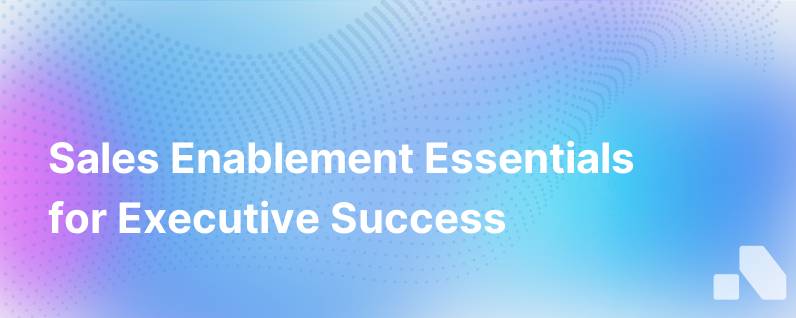
Whether you’re a B2B startup seeking growth or a seasoned organization looking to increase sales team productivity, sales enablement should be one of your top priorities. It can significantly boost your sales reps’ performance, bring in greater revenue, and create more aligned departments within your organization.
This guide will tackle sales enablement in-depth. From defining what sales enablement is to providing actionable strategies and benefits, we aim to provide a comprehensive guide for those looking to enhance their sales process.
Unpacking The Concept: What is Sales Enablement?
Sales enablement is a strategic and cross-functional discipline designed to increase sales results and productivity by providing integrated content, training, and coaching services for salespeople and frontline sales managers along the entire customer journey, powered by technology.
Notably, it is a continuous process. Sales enablement’s role is to ensure that salespeople possess the knowledge, skills, resources, and tools needed to optimize every interaction with buyers.
Why Does Sales Enablement Matter?
One reason why sales enablement is essential is because today's business environment is extremely competitive and complex. Buyers are more informed and critical about the solutions they invest in. In turn, salespeople need to be equipped not just to sell but to provide value at every buyer interaction. This is where sales enablement comes into play, providing strategies, resources, and insights that lead to a more informed and effective sales force.
Other factors contributing to the importance of sales enablement include more extended sales cycles in numerous B2B industries, an increased emphasis on sales and marketing alignment, and the enhanced capabilities offered by technology.
Sales Enablement Strategies
Implementing effective sales enablement strategies requires thoughtful planning, cross-departmental alignment, and continuous evaluation. Here are some strategies to consider:
Develop a Comprehensive Onboarding Program: A rigorously designed sales onboarding program helps your sales reps quicker grasp their roles, shortening the time it takes for them to start selling effectively.
Create an Ongoing Training System: Sales enablement isn’t a one-and-done initiative. Maintain an ongoing training program that continuously updates sales reps with new product developments, market trends, and competitor insights.
Align Sales and Marketing: When sales and marketing are aligned, your organization can present a unified front to prospects and customers. Try to foster a culture where these two departments work together.
Leverage Technology: Sales enablement technology can streamline, scale, and refine your sales process. Tools like Aomni can provide real-time account research and create personalized sales content quickly and efficiently.
Benefits of Sales Enablement
When implemented correctly, sales enablement can offer multiple benefits which include:
Increased Sales Productivity: By providing valuable content, training, and tools, sales enablement efforts aid your sales team in closing deals more effectively and efficiently.
Greater Sales and Marketing Alignment: Sales enablement helps align sales and marketing efforts, which can lead to more cohesive strategies, improved communication, and ultimately, more wins.
Improved Onboarding and Training Processes: A well-designed onboarding and ongoing training program can trim the learning curve for new sales hires and keep veteran reps honed to face evolving challenges.
Best Practices to Get Started With Sales Enablement
To start your sales enablement journey, here are some best practices to consider:
Securing Buy-In: The first step is to get stakeholders onboard with the concept of sales enablement and its potential benefits.
Setting Clear Goals: Determine what you want to achieve through your sales enablement efforts. Having clear goals will guide your strategy and help measure progress.
Centralizing Content: Create a centralized place where sales and marketing teams can access and share content needed throughout the sales process.
Tracking and Measuring: Establish key performance indicators (KPIs) to measure the effectiveness of your sales enablement efforts. Adjust and refine based on these insights for continuous improvement and alignment with business goals.
A comprehensive approach to sales enablement can be a game-changer in today's complex and competitive market. By putting an active strategy in place, your sales and marketing teams can learn to work more effectively and efficiently, ultimately driving success for your business. Companies offering solutions like Aomni can also provide invaluable assistance in this journey, helping develop empowered, effective sales teams.